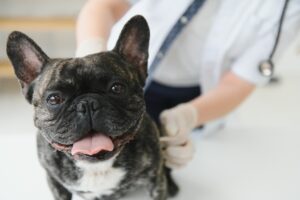Walking your puppy should be a joyful experience, but leash training can be a source of frustration for the pup and owner alike. Pulling, lunging, and tangled leashes don’t make for a fun outing. With patience and these effective techniques, you can transform your puppy into a well-mannered walking companion.
Why Leash Training Tips Matters
- Safety: A puppy on a leash is less likely to run into traffic, encounter dangers, or get lost.
- Socialization: Controlled walks help your puppy learn to navigate the world and interact with other dogs and people appropriately.
- Bonding: Leash walks provide dedicated time for you and your puppy to strengthen your bond.
- Legal requirements: Most areas have leash laws you must comply with.
Before You Start: Gear Up
- Collar or harness: Choose a comfortable, well-fitting collar or harness. Avoid choke or prong collars that can cause pain or injury.
- Leash: A standard 4-6 foot leash is ideal for training. Avoid retractable leashes which teach poor leash manners.
- High-value treats: Soft, enticing treats like boiled chicken or cheese are perfect for rewarding good behavior.
Step 1: Leash Introduction in a Calm Environment
- At home first: Let your puppy sniff and explore the leash and collar/harness. Offer treats, and make the initial experience positive.
- Short-wearing sessions: Put the collar/harness on for brief periods, offering treats and praise. Gradually increase the time your puppy wears it.
- Attach the leash: Allow your puppy to drag the leash around the house under supervision. Reward calmness around the leash.
Step 2: Start with Indoor Practice
- Follow me: Hold some treats in your hand, encouraging your puppy to follow as you walk around a distraction-free space in your home. Reward often.
- Short distances: Walk a few steps, then stop and offer praise and treats if your puppy stays by your side.
- Name the game: Introduce a verbal cue like “Let’s walk” or “Heel” as you start moving.
- Patience is key: Puppies have short attention spans—keep sessions brief and upbeat.
Step 3: Graduating to the Great Outdoors
- Start in a quiet place: Your backyard or a low-traffic street is ideal. Exciting environments will be too distracting initially.
- Manage expectations: Don’t aim for a long walk. Focus on short sessions and positive reinforcement for walking nicely.
- Change directions: Switch directions frequently to keep your puppy engaged and focused on you.
- Ignore pulling: If your puppy pulls, stop. Don’t tug back or get frustrated. Wait for them to offer a bit of slack, then reward and continue walking.
Troubleshooting Common Puppy Leash Issues
- Biting the leash: Redirect with a toy. If that fails, stop and remain still. Resume walking only when the puppy stops biting.
- Resistance or freezing: Don’t drag your puppy. Entice them with treats and upbeat praise.
- Distraction overload: Practice in less stimulating places at first. Increase distractions gradually as your puppy’s skills improve.
Additional Tips for Leash Training Success
- Consistency: Practice several short sessions daily.
- Timing your rewards: Reward your puppy the moment they make the right choice (i.e., walking beside you).
- Consider a training class: Professional guidance can help you establish good habits from the start.
- Keep it fun: Let your puppy sniff occasionally and make walks an enjoyable bonding experience.







